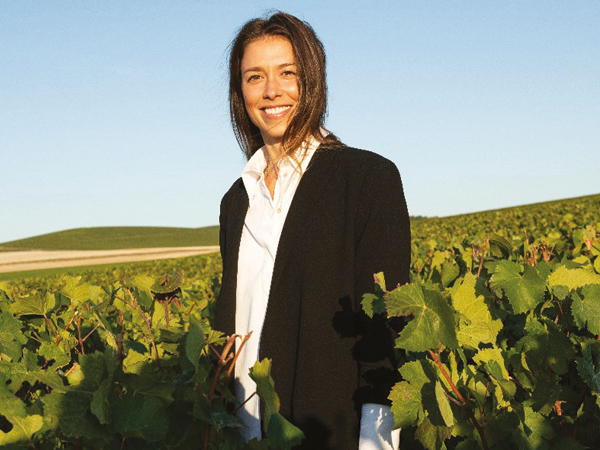
Headline Heroes: Creating Champagne’s ‘perfect year’
David Kermode looks at how top Champagne houses are taking their pick of the best vintages to create superior blends
The art of blending is the cornerstone of Champagne. With the region’s cool climate, the ability to even out imperfections from one year to the next, drawing on carefully preserved reserve wines, has elevated the cellar master to the role of alchemist, maintaining a consistent, signature style that scarcely changes. Yet, for all its wonder, non-vintage rarely rivals vintage-specific cuvées for prestige and price. So is one approach superior to the other?
The fact that vintages vary inevitably means that certain years will be elevated in stature, most especially if produced from a single vineyard, while others might not even be declared, the juice destined for those non-vintage reserve tanks, to be blended into the mix. There is, however, a third way: a relatively niche, but sought after ‘multi’ vintage approach, created in much the same way as NV, but using highly regarded vintages, deemed to be complementary to each other, with the aim of creating the ‘perfect year’.
Laurent-Perrier’s top cuvée Grand Siècle adopts such an approach, meaning vintage-specific releases from the house are relatively rare.
“Between 1950 and 2015, we have declared 31 vintages, whereas the whole industry has declared 52 during this same period,” says Lucie Pereyre de Nonancourt, a scion of the family in control of the house.“Because we believe the art of blending can achieve a higher result than a vintage on its own, we have developed an expertise in selecting, vinifying and storing the reserve wines that we need for the final blend. The choice of making a blend of three vintages is only relevant when consistency is reached, and the chosen vintages will be used across several iterations in order to maintain style and quality.”
↓
Assessing quality
Alex Hunt MW, purchasing director at Berkmann Wine Cellars, suggests that vintage is merely one factor determining quality: “Do houses tend to make their vintage wines from the best fruit, from superior harvests, and age them for longer before disgorgement? Yes. So that biases the results in practice.
“Here’s another way to look at it: is a violin sonata inherently superior to a symphony? Of course not. But to master a violin sonata requires greater skill of the soloist than even the top orchestral players possess. Likewise, the conscientious winemaker has two ways to achieve balance, complexity and dimension in a wine. They can either construct it from numerous more basic building blocks, creating a whole that’s greater than the sum of the parts, or find a single raw material that already possesses those attributes, and bottle that.
“A single-vineyard, single-variety, single-vintage Champagne is the extreme example, relying almost entirely on prior native brilliance in that one lot of grapes to deliver a fully rounded, exciting end product. It’s no coincidence that some of the most lauded Champagnes fall into this category.”
Around 90% of all Champagne is non-vintage, so family-owned Champagne Moutard is unusual, with NV accounting for just 60% of production. At its UK importer, Lanchester Wines, buyer James Dainty believes both approaches should be afforded equal respect: “Vintage wines are ‘a photograph of the year’, a snapshot of unique climate conditions creating exclusive expressions, affecting acidity, sweetness and finesse, while the blending of these vintages to create something new and bespoke is a skilled craft and what makes Champagne so wonderful.”
Headline Hero: Lucie Pereyre de Nonancourt, ambassador, Laurent-Perrier Grand Siècle
(In association with Laurent-Perrier Grand Siècle)

Tell us about Grand Siècle and what makes it special?
When my grandfather, Bernard de Nonancourt, took over in 1948, he wanted to forge the reputation of Laurent-Perrier and for this he created a prestige cuvée. At that time, such cuvées were always based on the expression of one single vintage. He noticed that even when exceptional, a vintage was not able to reach the perfection he sought… he was convinced that he could recreate the ‘perfect year’, which nature alone cannot provide, through the art of assemblage. His expression was a Champagne that has long ageing potential and over time develops depth, intensity and aromatic complexity, yet retains its freshness and vibrancy. To obtain it, he established three core principles: the first relies on the choice of three exceptional vintages, complementary in character; second is the selection of certain Grands Crus of Chardonnay and Pinot Noir, exclusively; while the third principle is based on the notion of patience, as a minimum of 10 years ageing on lees is required for bottles and a few years longer for magnums, which age more slowly.
What is the significance of the Grand Cru fruit?
The term ‘Grand Cru’ refers to the highest quality vineyards… if a village has been classified as Grand Cru it’s because it produces some of the finest grapes due to optimal growing conditions, which contribute to the fruit’s distinctive characteristics and superior quality. With Grand Siècle, we will seek the minerality, the freshness and finesse of the Chardonnay from Le Mesnil, Avize, Cramant, Oger and Chouilly, and the elegant structure and aromatics of the Pinot Noir from Ambonnay, Bouzy, Tours-sur-Marne, Verzy, Verzenay and Mailly.
Tell us about the latest iterations of Grand Siècle?
A new iteration means that the blend has spent the required amount of time on lees to reach the right aromatic complexity, along with the perfect balance between the three vintages. That’s why we have two different iterations on the market currently: Grand Siècle Iteration No.26 in bottle and Grand Siècle Iteration No.23 in magnum.
Keywords:
- Champagne
- Lanchester Wines
- vintages
- Berkmann Wine Cellars
- Reserve Wines
- art of blending
- Lucie Pereyre de Nonancourt
- Champagne Moutard
- Laurent-Perrier Grand Siècle




